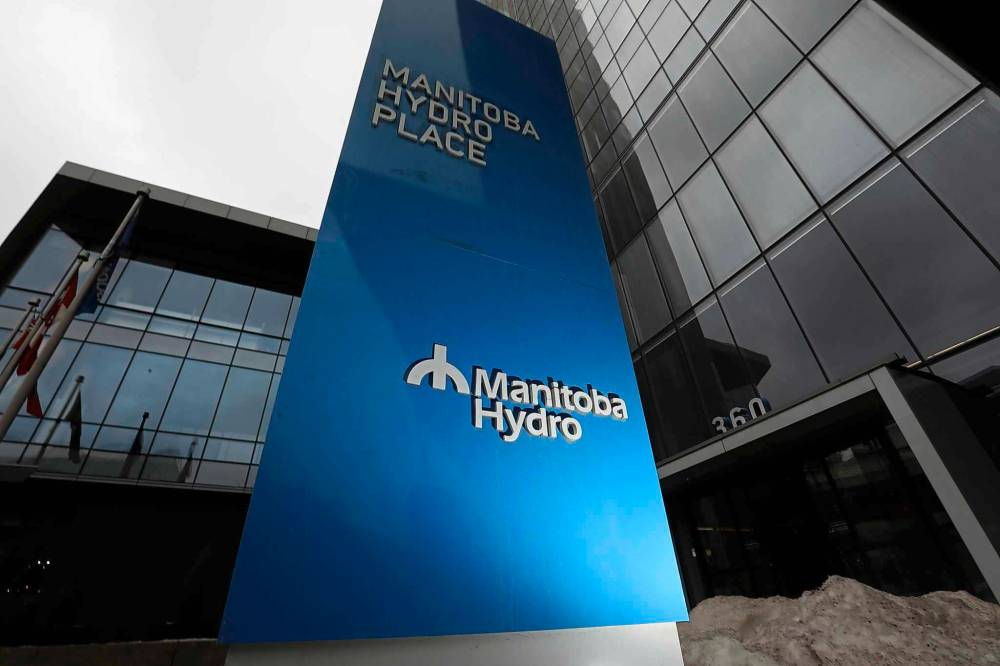Manitobans can, thankfully, put a price on PUB’s vital Hydro oversight
Read this article for free:
or
Already have an account? Log in here »
To continue reading, please subscribe:
Monthly Digital Subscription
$0 for the first 4 weeks*
- Enjoy unlimited reading on winnipegfreepress.com
- Read the E-Edition, our digital replica newspaper
- Access News Break, our award-winning app
- Play interactive puzzles
*No charge for 4 weeks then price increases to the regular rate of $19.00 plus GST every four weeks. Offer available to new and qualified returning subscribers only. Cancel any time.
Monthly Digital Subscription
$4.75/week*
- Enjoy unlimited reading on winnipegfreepress.com
- Read the E-Edition, our digital replica newspaper
- Access News Break, our award-winning app
- Play interactive puzzles
*Billed as $19 plus GST every four weeks. Cancel any time.
To continue reading, please subscribe:
Add Free Press access to your Brandon Sun subscription for only an additional
$1 for the first 4 weeks*
*Your next subscription payment will increase by $1.00 and you will be charged $16.99 plus GST for four weeks. After four weeks, your payment will increase to $23.99 plus GST every four weeks.
Read unlimited articles for free today:
or
Already have an account? Log in here »
Hey there, time traveller!
This article was published 27/01/2022 (1409 days ago), so information in it may no longer be current.
The Public Utilities Board gave Manitoba Hydro a stern message this week: cut spending and cancel plans to hire almost 400 more staff over the next two years to minimize rate increases for electricity customers.
It’s a good reminder of how important it is to have an independent regulator keep an eye on government monopolies.
The PUB released a 96-page report Wednesday that provides reasons for an earlier decision to reduce Hydro’s five per cent rate application this year to 3.6 per cent. In the report, the PUB criticized Hydro’s plan to increase operating and administrative expenses in 2022-23 by seven per cent, calling it “unsupportable” at a time when the Crown corporation is reeling from one of the worst droughts in 40 years.
“In a time of drought, with no evidence that the drought will end in 2022-23, Manitoba Hydro must reduce expenditures,” the board wrote.
Hydro is facing a loss of $190 million in 2021-22, mainly because of low water levels that reduced its ability to sell power on the temporary export market.
Hydro is facing a loss of $190 million in 2021-22, mainly because of low water levels that reduced its ability to sell power on the temporary export market. Between that and financing charges coming online in 2021 from the new Keeyask generating station, Hydro says it needs higher rates to prevent a further erosion of its balance sheet.
Yet, at the same time, it plans to add 398 new full-time equivalent positions to its payroll over the next two years and increase operating and administrative spending by $38 million in 2022-23.
Hydro argues staffing cuts in recent years (mainly through a voluntary departure program that began in 2017 ) reduced the number of positions to levels not seen since the utility purchased Winnipeg Hydro in 2002. Hydro says those levels are not sustainable and must be increased to ensure it can provide “safe and reliable service.”

The PUB begs to differ. It says internal savings found in recent years should not be “temporary,” especially in the face of drought and new costs related to megaprojects such as Keeyask.
“The board finds that cost control should be ongoing and continue in the post-voluntary departure program years, the pandemic years, and drought years,” the report says.
Hydro didn’t provide the PUB with a breakdown of how it plans to spend the extra $38 million. It also didn’t specify where the 398 proposed hires would be.
Hydro reduced its staffing from 6,411 to 4,954 full-time equivalent positions between 2016 and 2021. It has since increased that slightly to 5,022 and now proposes to expand staffing levels to 5,420.
Hydro reduced its staffing from 6,411 to 4,954 full-time equivalent positions between 2016 and 2021.
Meanwhile, after cutting operating and administrative expenses from $543 million to $508 million between 2015 and 2018, Hydro has been increasing those costs ever since (by 9.6 per cent over the past three years to $557 million). It plans to increase that further to $595 million in 2022-23, mainly through new hires. Human resources make up 79 per cent of operating and administrative costs.
Hydro hasn’t specified what its rate application will be for 2022-23. But part of it would go towards covering those costs, to which the PUB objects.
“Based on the record of this hearing, the board finds that Manitoba Hydro can slow, pause, or suspend planned (operating and administrative) increases,” the PUB wrote, adding the board will consider what steps Manitoba Hydro is taking to manage those costs in the next general rate application process.
The PUB also criticized Hydro for failing to present a long-term financial plan that includes multi-year cost and revenue projections. The regulator called it “unacceptable” and ordered Hydro to include one in its next rate application.
The PUB also criticized Hydro for failing to present a long-term financial plan that includes multi-year cost and revenue projections.
Manitobans may want to ask where Hydro’s government-appointed board of directors has been in all of this.
The board recently approved the corporation’s 2022-23 budget, which includes the $38-million spending increase. Is this what passes as financial oversight these days, especially when Hydro is facing record debt levels?
There’s little doubt electricity rates will have to rise annually to some degree to pay the financing charges on Keeyask (especially with Hydro’s limited export options if drought conditions persist). However, raising rates to expand Hydro’s workforce in the current financial climate is irresponsible.
Fortunately for Manitobans, it appears the PUB will prevent Hydro from doing so.
tom.brodbeck@freepress.mb.ca

Tom has been covering Manitoba politics since the early 1990s and joined the Winnipeg Free Press news team in 2019.
Our newsroom depends on a growing audience of readers to power our journalism. If you are not a paid reader, please consider becoming a subscriber.
Our newsroom depends on its audience of readers to power our journalism. Thank you for your support.







